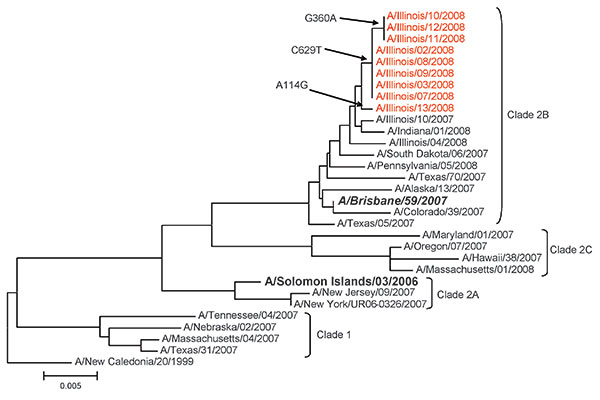Volume 15, Number 12—December 2009
Dispatch
Outbreak of Antiviral Drug–Resistant Influenza A in Long-Term Care Facility, Illinois, USA, 2008
Figure 2

Figure 2. Phylogenetic analysis of the hemagglutinin gene (HA1 portion) of influenza A viruses (H1N1) isolated during an influenza A outbreak in a long-term care facility, Illinois, USA, 2008. Viruses from buildings A and B shared nearly identical sequences. One of the viruses from building B was more similar in sequence to 1 virus from building A. However, this finding could reflect natural variance in circulating viruses. Red indicates outbreak viruses, boldface italics indicates vaccine strain for 2008–09, boldface indicates vaccine strain for 2007–08, and arrows indicate nucleotide differences in HA1 subunit. Scale bar indicates nucleotide substitutions per site.
Page created: December 09, 2010
Page updated: December 09, 2010
Page reviewed: December 09, 2010
The conclusions, findings, and opinions expressed by authors contributing to this journal do not necessarily reflect the official position of the U.S. Department of Health and Human Services, the Public Health Service, the Centers for Disease Control and Prevention, or the authors' affiliated institutions. Use of trade names is for identification only and does not imply endorsement by any of the groups named above.